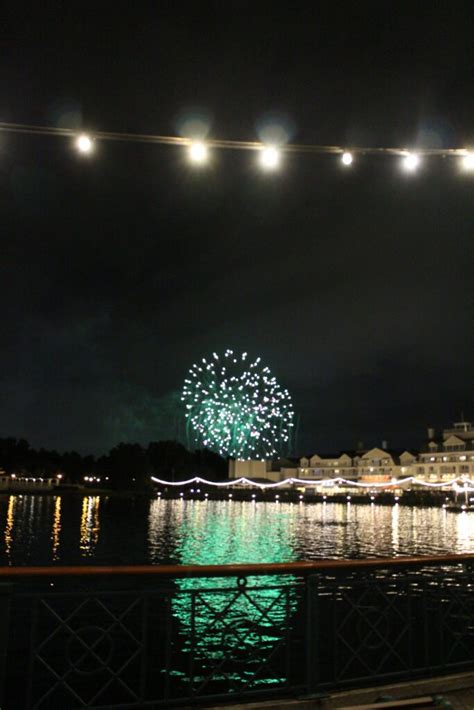How Far Away Can You See Fireworks At Night
Arias News
Apr 02, 2025 · 4 min read

Table of Contents
How Far Away Can You See Fireworks at Night? A Comprehensive Guide
Fireworks displays are breathtaking spectacles, their vibrant colors and dazzling bursts illuminating the night sky. But how far away can you actually see these stunning pyrotechnic shows? The answer, unfortunately, isn't a simple number. Visibility depends on a complex interplay of factors, including the size and intensity of the fireworks, atmospheric conditions, and the observer's location and eyesight. Let's delve into the science and practical considerations that determine fireworks viewing distance.
Factors Affecting Fireworks Visibility
Several key elements influence how far away you can see fireworks. Understanding these factors will help you plan your viewing experience and predict visibility.
1. The Size and Intensity of the Fireworks
Larger fireworks naturally produce brighter and more expansive displays. A large, high-burst shell will be visible from much greater distances than a smaller, ground-based firework. The intensity of the light emitted directly correlates with visibility. Brighter fireworks, with greater luminance, will be visible from further away. Think of the difference between a sparkler and a massive aerial shell; the latter dwarfs the former in both size and visible range.
2. Atmospheric Conditions
Atmospheric conditions significantly impact visibility. These include:
-
Air Clarity: Clean, dry air allows light to travel further without scattering. Areas with high levels of air pollution, smog, or haze will severely reduce visibility. Think about a clear night in the desert versus a foggy night in a coastal city; the contrast is dramatic. The presence of dust, smoke, or water vapor in the air scatters and absorbs light, making it harder to see distant fireworks.
-
Humidity: High humidity can increase light scattering, similar to air pollution. Moist air can also refract (bend) light, slightly distorting the appearance of fireworks at a distance.
-
Temperature Inversions: Temperature inversions, where a layer of warmer air sits above cooler air, can trap pollutants and reduce visibility. This is a common occurrence in valleys and can significantly affect firework visibility.
-
Weather Conditions: Rain, snow, or heavy fog will completely obscure fireworks, regardless of their size or intensity. Even light cloud cover can reduce visibility, particularly for fainter fireworks.
3. Observer's Location and Eye Sight
The observer's location plays a critical role:
-
Elevation: Observing fireworks from a higher elevation point, such as a hilltop or tall building, dramatically increases viewing distance. The higher you are, the further the line of sight extends, minimizing the effects of atmospheric interference.
-
Obstacles: Trees, buildings, and other obstacles can block the view, preventing you from seeing distant fireworks. An unobstructed view is essential for optimal viewing.
-
Light Pollution: Urban areas often suffer from significant light pollution, which washes out the fainter details of fireworks. This is why you often see fireworks better in rural areas.
Finally, the observer’s eyesight influences visibility. Someone with better eyesight will naturally see fireworks from further away than someone with poor vision.
Estimating Viewing Distance: Practical Considerations
While there's no definitive formula, here's a practical approach to estimating firework visibility:
For smaller, ground-based fireworks: You're likely to see these from a distance of a few hundred yards, perhaps up to a half-mile (800 meters) under ideal atmospheric conditions. However, any significant obstacles or atmospheric interference will significantly reduce this range.
For larger aerial fireworks: Under ideal conditions, you might see large, high-burst fireworks from several miles away (up to 5 miles or 8 kilometers in some cases). However, this is highly dependent on the firework’s intensity, atmospheric clarity, and the observer's elevation.
Rule of Thumb: Start with a reasonable assumption. If you know the size of the fireworks being used, and the atmospheric conditions are generally clear, use the higher end of the estimates. However, remember to adjust your expectations downwards for less-than-ideal conditions. If you can't see details in the fireworks, you're likely too far away.
Maximizing Your Fireworks Viewing Experience
To maximize your chances of seeing fireworks from a greater distance, consider these tips:
-
Check the weather forecast: Look for clear skies and low humidity for optimal viewing.
-
Choose a high vantage point: Find an elevated location with minimal light pollution and unobstructed views.
-
Use binoculars or a telescope: For distant displays, binoculars or a telescope can enhance visibility and detail.
-
Consider the time of year: Atmospheric conditions vary throughout the year. Clearer skies are more common during certain seasons.
-
Be aware of safety: Never approach a fireworks display too closely. Always follow instructions from safety officials.
Conclusion: A Spectacle of Light and Distance
Determining the exact distance at which fireworks are visible is a multifaceted problem, influenced by firework size, atmospheric clarity, and observer location. While precise numerical answers are elusive, a combination of careful observation, understanding atmospheric conditions, and strategic location selection will significantly enhance your ability to witness and appreciate these dazzling displays from afar. Remember, the beauty of fireworks lies not only in their vibrant colors but also in their ability to create a shared experience, connecting people across distances and uniting them in wonder. So, plan your vantage point strategically, embrace the unpredictable nature of the atmosphere, and enjoy the spectacular show!
Latest Posts
Latest Posts
-
What Does It Mean When Someone Says
Apr 03, 2025
-
150 Mcg Is Equal To How Many Mg
Apr 03, 2025
-
When Does Rukia Get Her Powers Back
Apr 03, 2025
-
How Old Are You If You Were Born In 1956
Apr 03, 2025
-
According To The Chapter Who Is Dr Eric Sanderson
Apr 03, 2025
Related Post
Thank you for visiting our website which covers about How Far Away Can You See Fireworks At Night . We hope the information provided has been useful to you. Feel free to contact us if you have any questions or need further assistance. See you next time and don't miss to bookmark.
